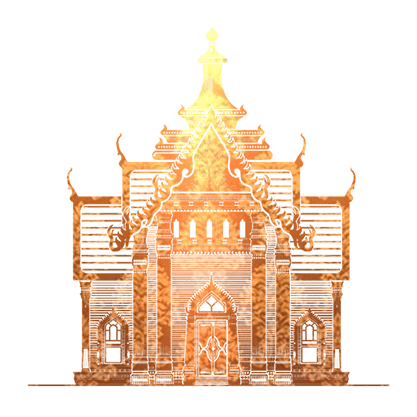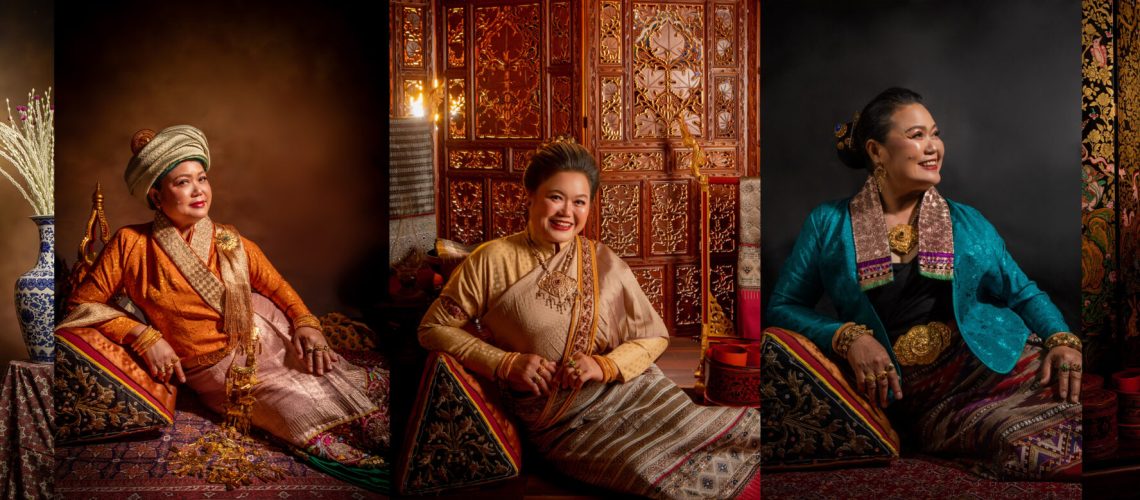
Lanna’s Sinh Queen
Lanna’s Sinh Queen fabric is renowned as the most exquisite of all Sinh textiles, valued for its scarcity and high cost. It’s considered one of the most sought-after ancient fabrics, comparable to the status of Benjaphakee amulets among amulets. Legend has it that owning all five types of Sinh Queen fabric is thought to bring other ancient textiles to the collector. (Personal belief)
1. Mhai Kham Chiang Tung Sinh
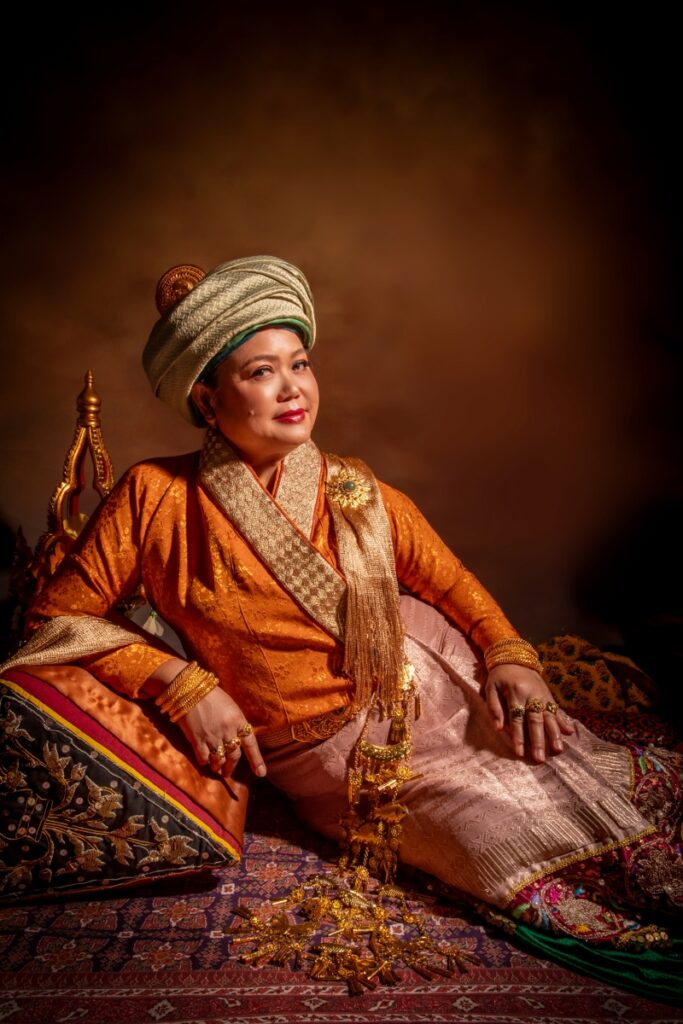
Mhai Kham (golden thread) Chiang Tung (Keng Tung) Sinh, also known as Bua Kham Sinh (Golden Lotus)
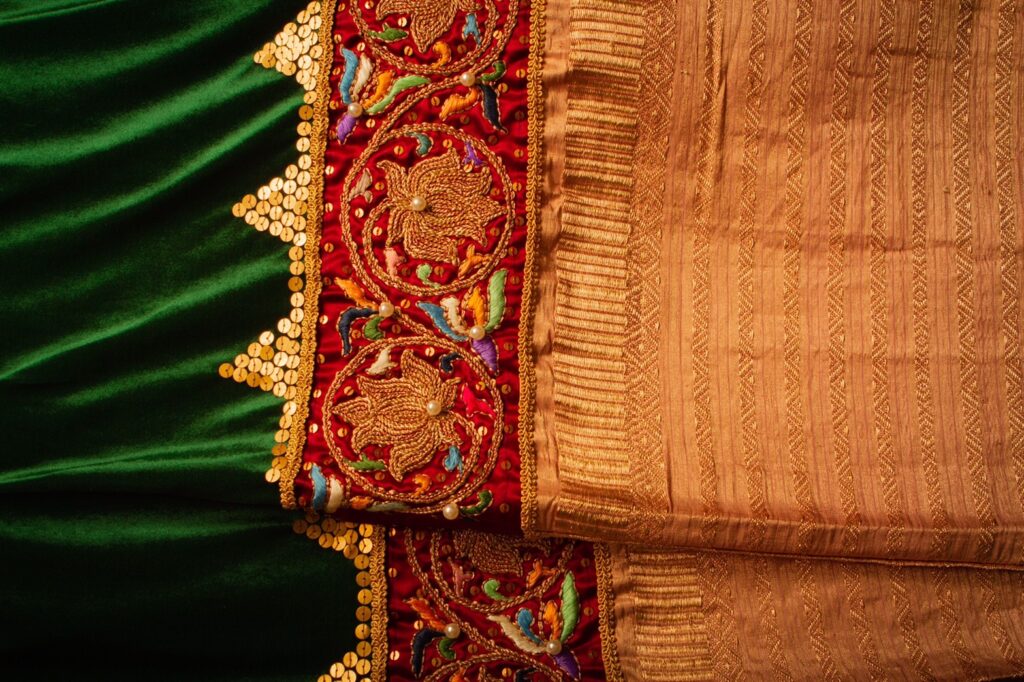
Unlike the other four Sinh fabrics, Sinh Queen has its origins in the Dai Kun royal court, not Thailand. Renowned for its beauty and unique qualities, this fabric commands a high price due to its scarcity and difficulty to obtain. It’s believed to have mystical properties and is said to select its owner. As Chiang Tung was a trading center linking Lanna, China, and Burma, this fabric reflects the cultural influences of these regions.
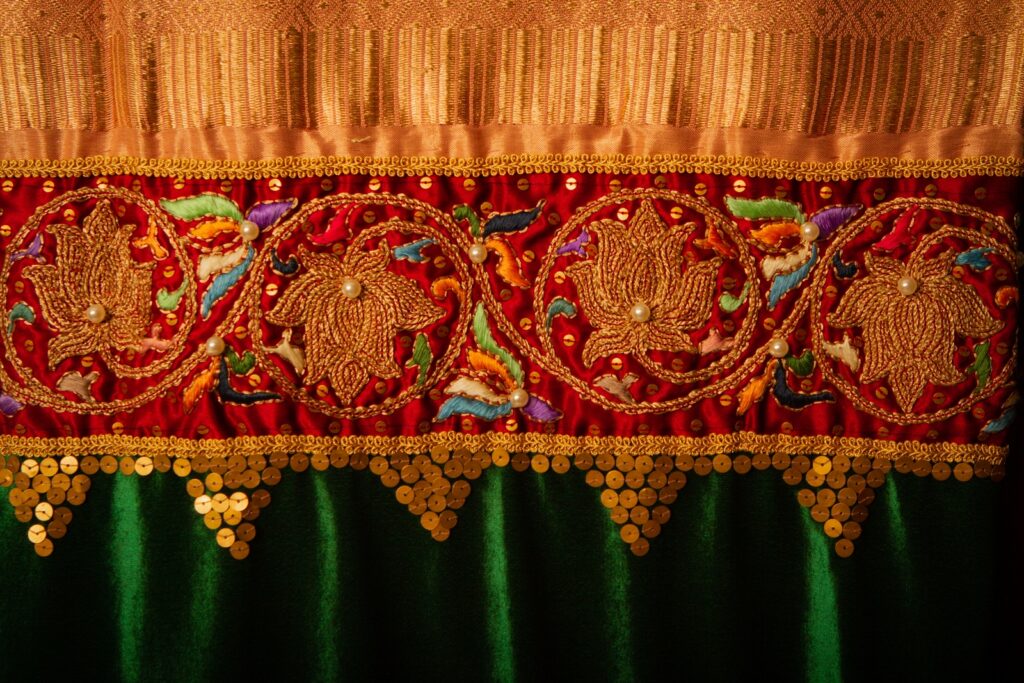
Sinh fabric is woven with Yok Muk (brocade) using Mhai Kham. This process involves rolling gold into long, flat threads, twisting them with fibers, typically cotton, and then weaving them together with the lower part of the Sinh, which is usually made of Chinese silk or green velvet. The top of the Tin Sinh (the foot of Sinh) is embroidered with Bua Kham patterns using silk threads or precious metals. The bottom of the Sinh is adorned with strips of Chinese silk.
2. Royal court of Chiang Mai’s Tin Jok Mhai Ngern (silver thread) Mhai Kham (golden thread) Sinh
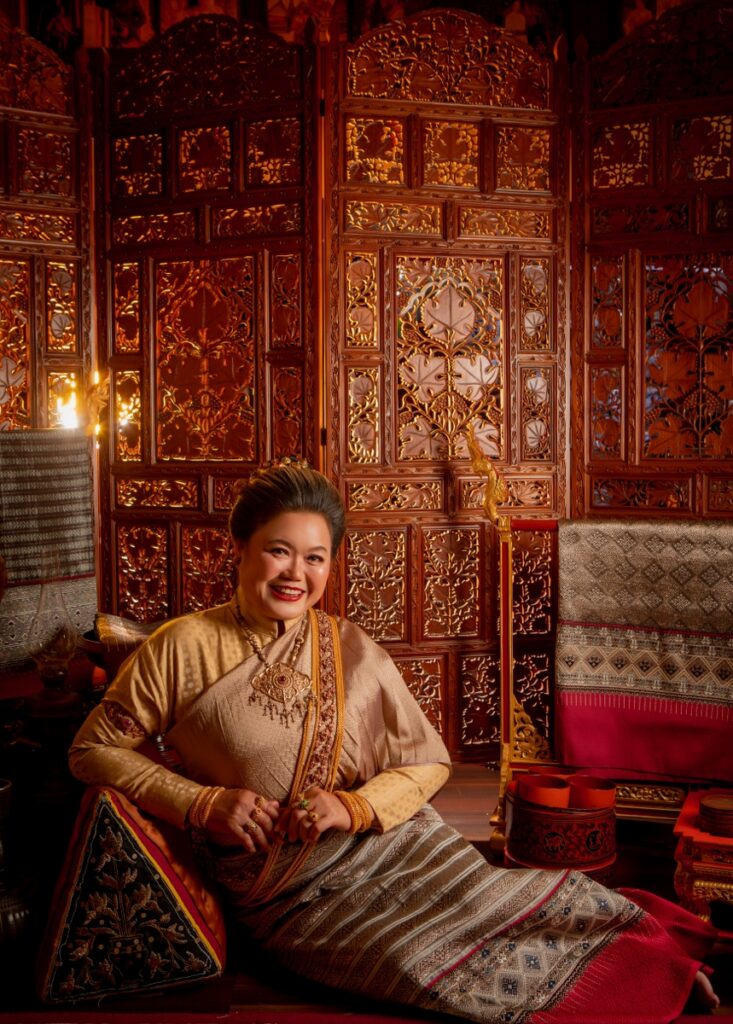
Chiang Mai-style Tin Jok Sinh is considered the benchmark for Lanna’s Sinh, renowned for its intricate and well-defined patterns. This type of Sinh is highly coveted and often sought by the nobility of Lamphun and Lampang, as well as affluent individuals.
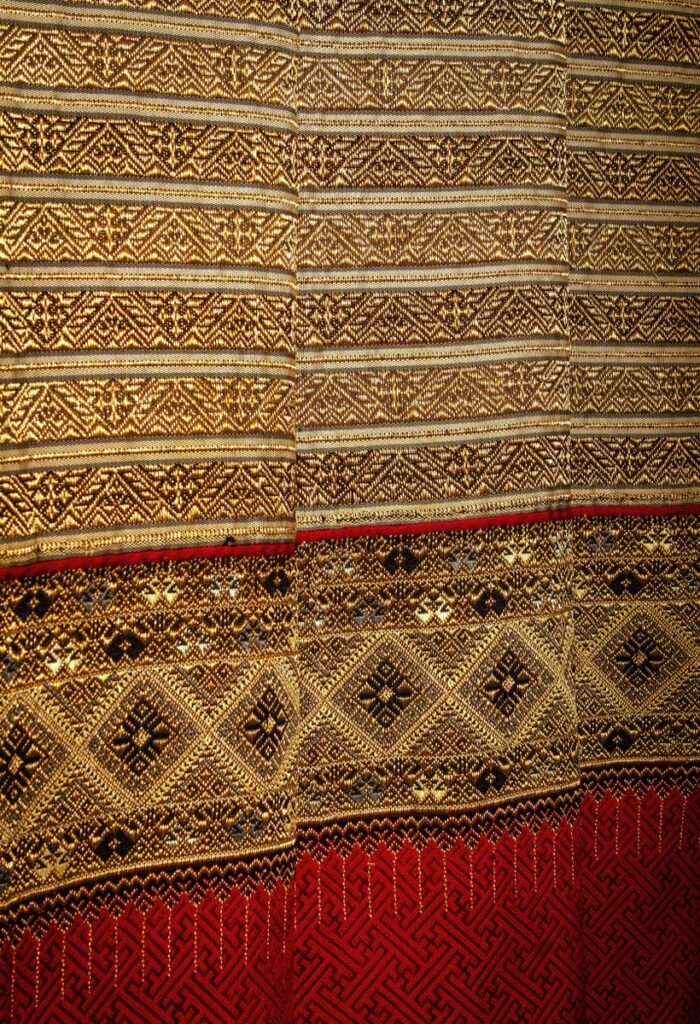
Chiang Mai-style Tin Jok Sinh shares common features with other Tin Jok Sinh, including the Jok pattern along the edges and the open red space at the bottom called “Leb Sinh” (Hem). The lantern design with a bird drinking water is particularly popular among the various patterns. This design features two layers of triangular bird chambers on top and one on the bottom. While the bottom of the Sinh is typically woven with cotton, it’s made with gold or silver threads for royalty or the wealthy and is attached to a horizontally striped skirt. In Princess Dara Rasami’s palaces, both the Tua Sinh and Tin Sinh are admired for their complementary and visually appealing colors.
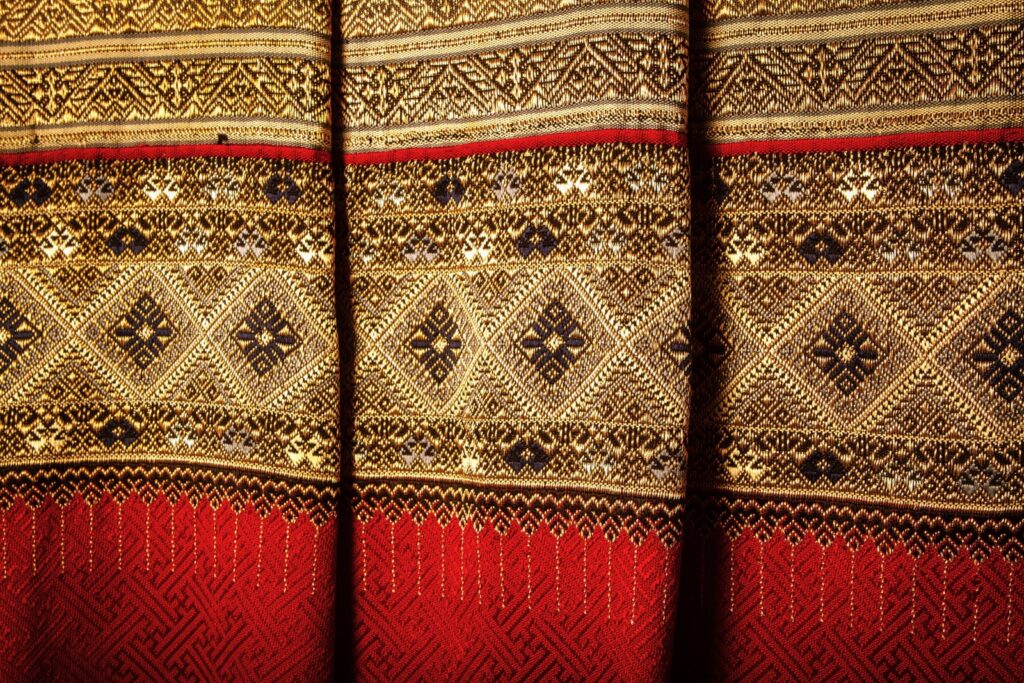
Tin Sinh woven with Mhai Kham wasn’t just for the Chiang Mai royal court; wealthy nobles also wore it. Nowadays, finding a complete Tin Sinh is difficult, and most of the remaining ones are made with precious metals.
3. Nam Tuam (water flooding) Sinh
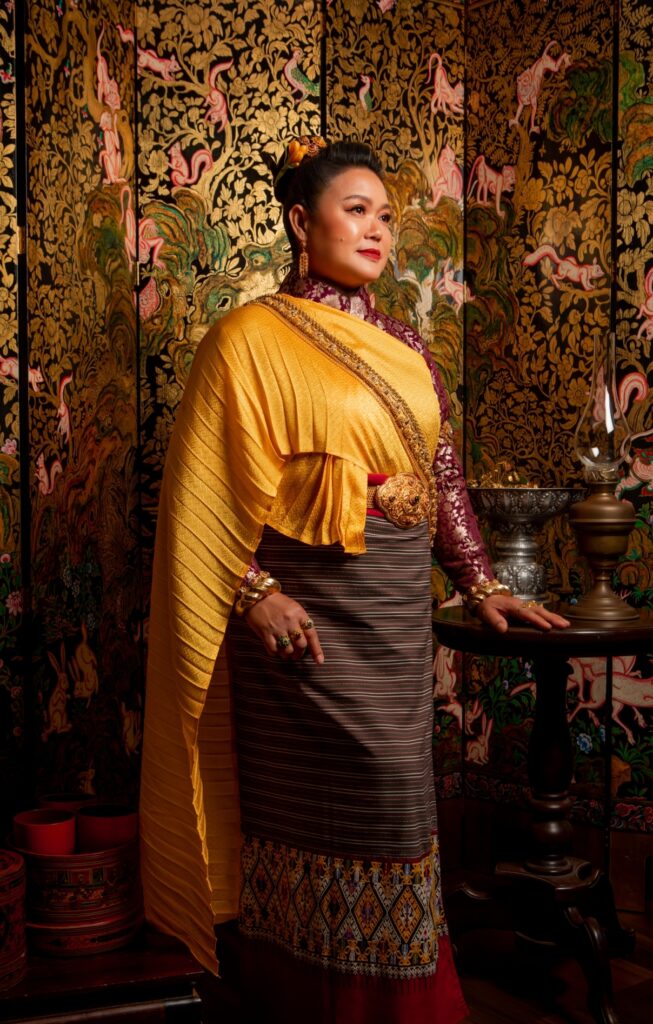
This Tai Yuan Sinh is renowned for its distinctive weaving style, featuring unique natural patterns such as spiders (Kam Pung), butterflies (Kam Bi), and dragonfly larvae (E Nia), which are not found elsewhere. It originated from an area that was submerged during the construction of the Bhumibol (Yanhi) Dam in Tak Province, which is how it acquired its name. Once a prosperous ancient community, its history was largely erased when the dam was built, forcing residents to flee. Many were reluctant to leave, clinging to their homes despite the dangers, while others escaped with only essential belongings, including a few Sinh pieces, which were scattered. As they resettled in new areas, their way of life changed, and over time, the tradition was lost with no successors to continue it.
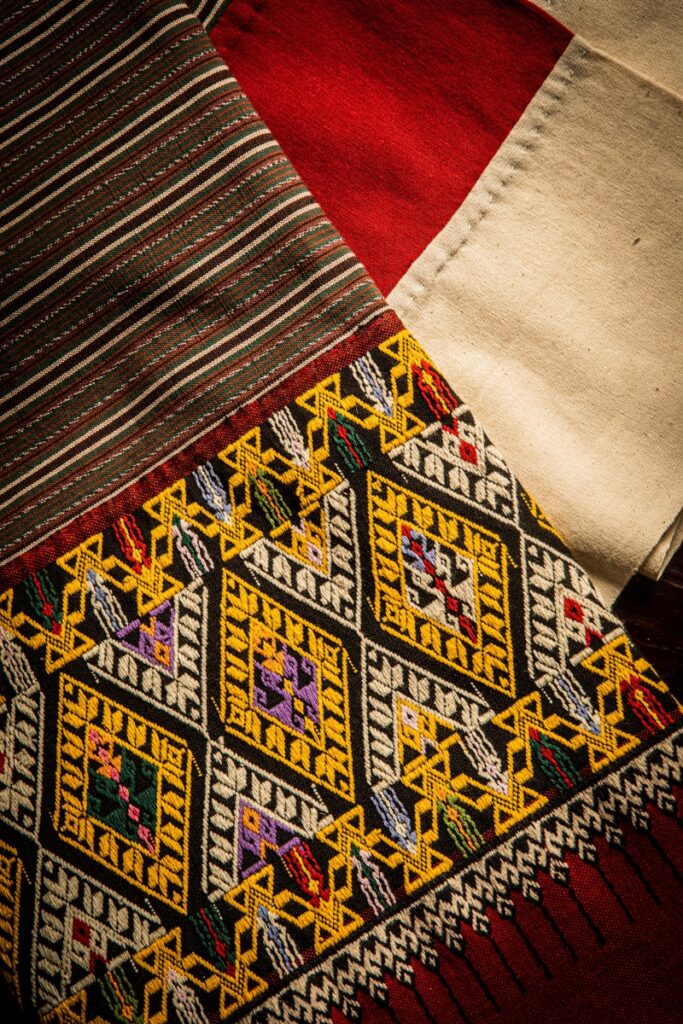
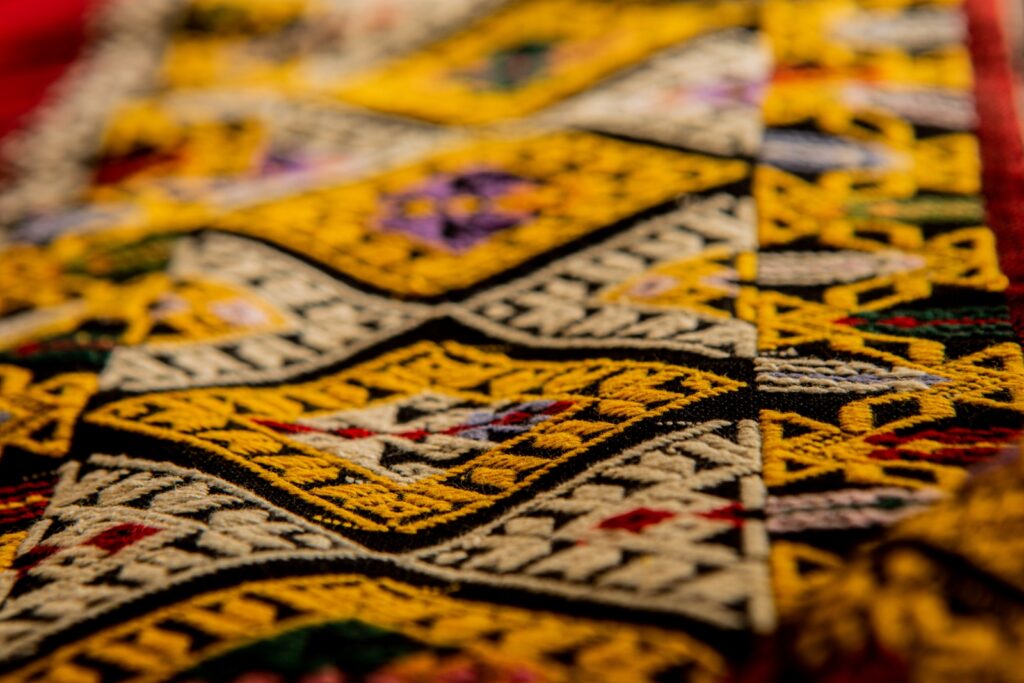
This type of Sinh has patterns and elements similar to those used in the Chiang Mai Royal Court but lacks the silver or gold threads found in royal Sinh, making it less ornate. It offers a wide range of patterns, with the Sa Pao tail being a distinctive feature. The Sa Pao tail is completely black and shorter in length.
4. Wi Sedh (splendid technique) Müang Nan Sinh
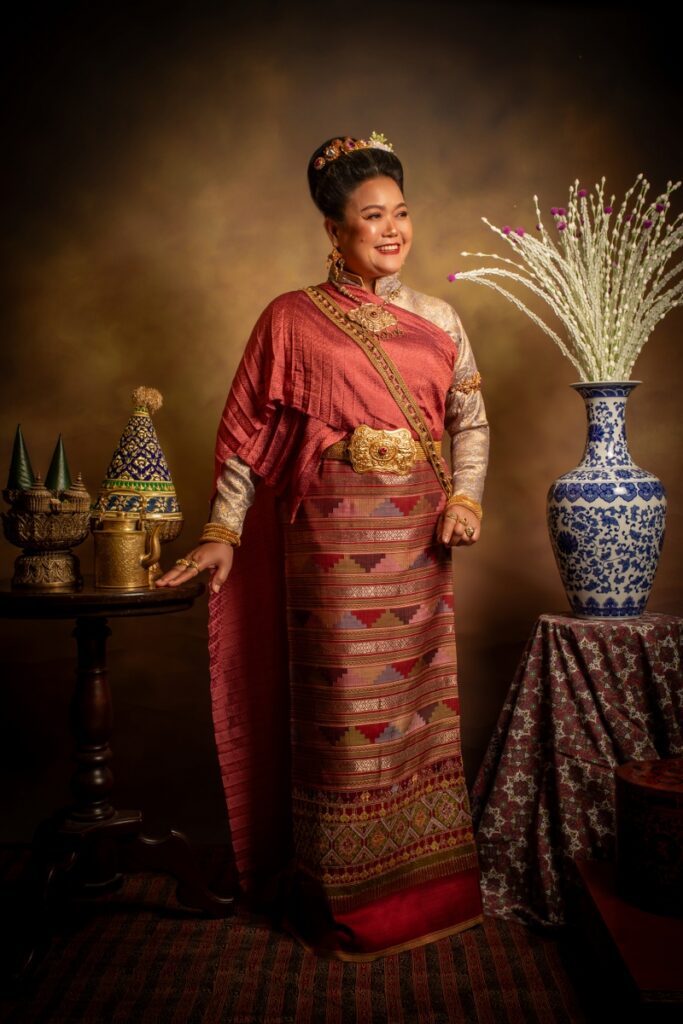
Müang Nan, or Nantaburi, translates to “the city of happiness and joy.” Müang Nan is renowned as the birthplace of many exquisite Sinh fabrics. The beauty of Müang Nan’s Sinh lies in its fusion of techniques from various ethnic groups, including Yuan, Lü, and Lao, resulting in a unique and distinctive identity.
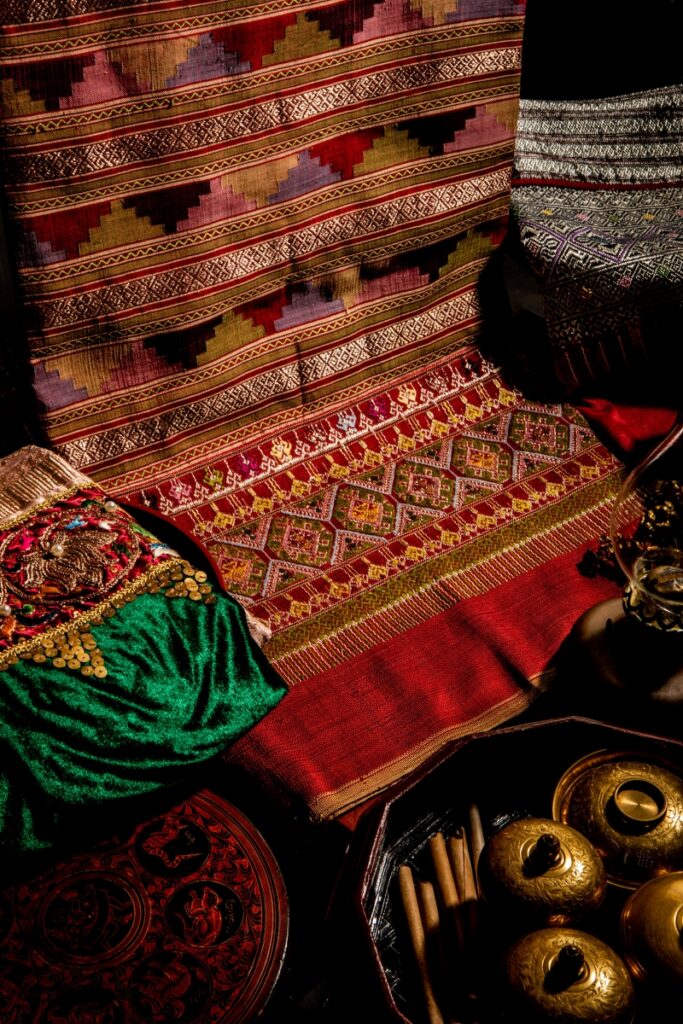
Wi Sedh Sinh, also known as “Lhai Nan Sinh”
The beauty of Northern Sinh typically highlights the Jok pattern in the Tin Sinh section, but this particular type of Sinh is notable for its beauty throughout the entire fabric, including the Tua Sinh, Tin Sinh, and the overall color. It is crafted with three seams (as opposed to the one or two seams found in modern Sinh) and employs various techniques such as Jok (Extra supplementary weave), Koh Luang (Tapestry weave), Khid (Supplementary weft weave), and Mudmee. This combination of techniques is the origin of the name “Wi Sedh Müang Nan Sinh.”
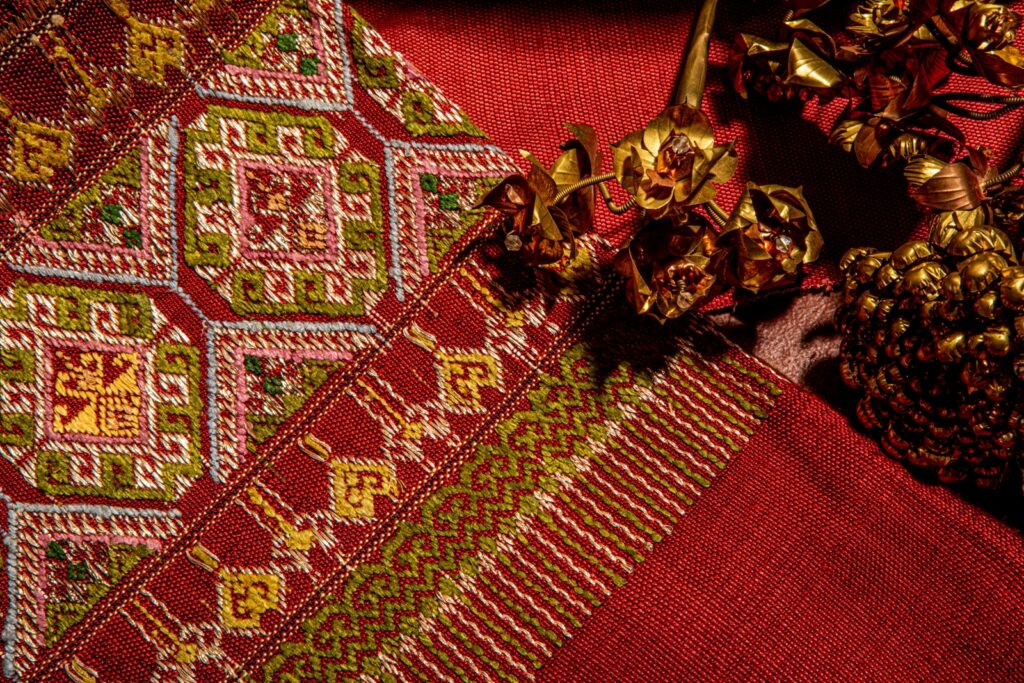
The rarity of this type of Sinh that combines the techniques mentioned is about 20 pieces, which are scattered in museums and collectors. It is said that this type of Sinh shows no signs of use, but it is old because it was kept. It is a Sinh that was passed down and put on a shrine. In 1 year, if there is a ceremony, it is taken out to use. This is another reason why there are few pieces, because it is rarely used, so there is no more weaving.
5. Uttaradit’s Nam Pat – Fak Tha Sinh
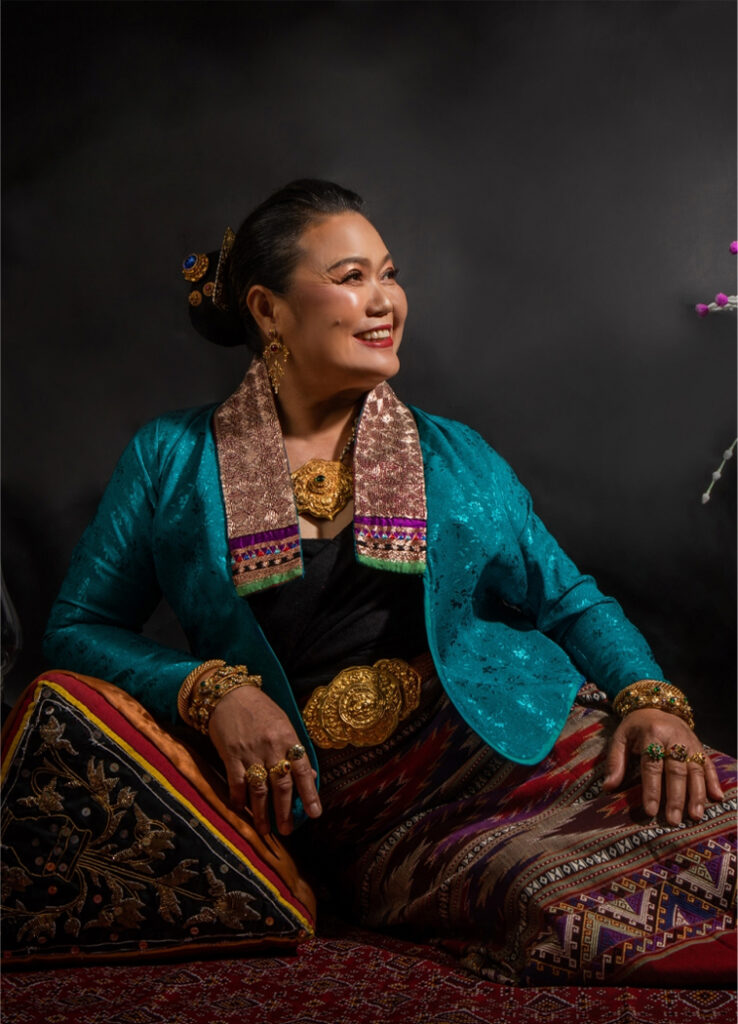
The Nam Pat people originally lived in Laos. They later migrated to settle in Nam Pat District and eventually expanded the city to include Fak Tha District.
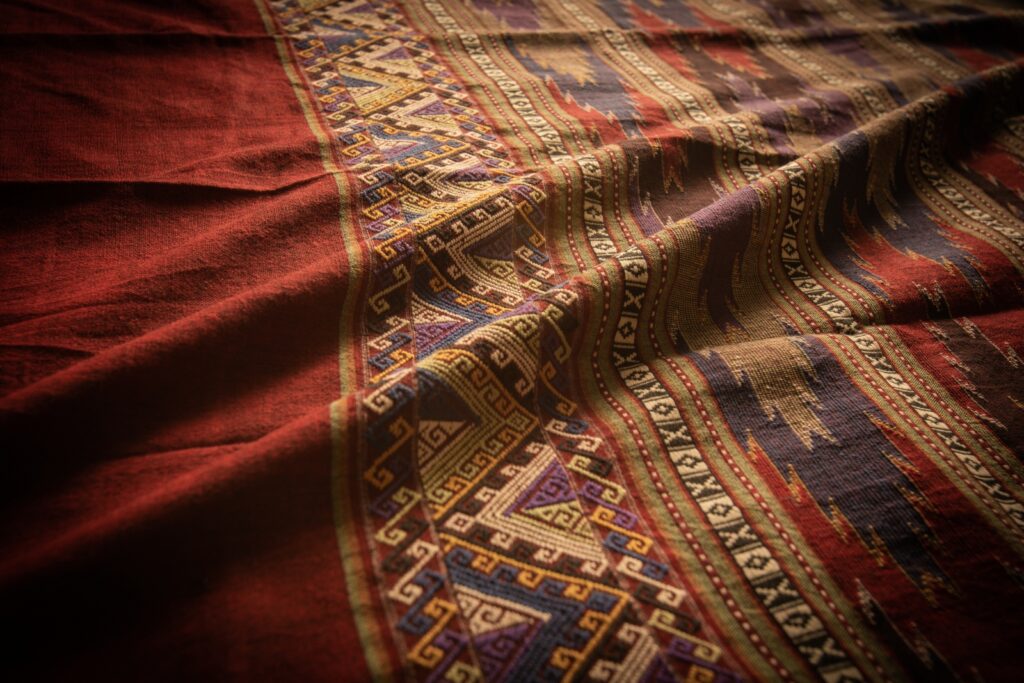
Nam Pat – Fak Tha Sinh reflects a rich blend of Lao, Lü, and Yuan fabric influences. It features meticulous design and color selection, resembling the Lao Khrang Sinh in appearance. The body of the Sinh is tie-dyed with Lao patterns, while some pieces incorporate the Koh Luang technique similar to Lü fabrics. The bottom of the Sinh utilizes the Jok method, akin to Tai Yuan (Lanna) styles. The tie-dyed patterns are distinctive, and some pieces include foreign fabrics, such as Chinese and Indian, in the Tua Sinh.
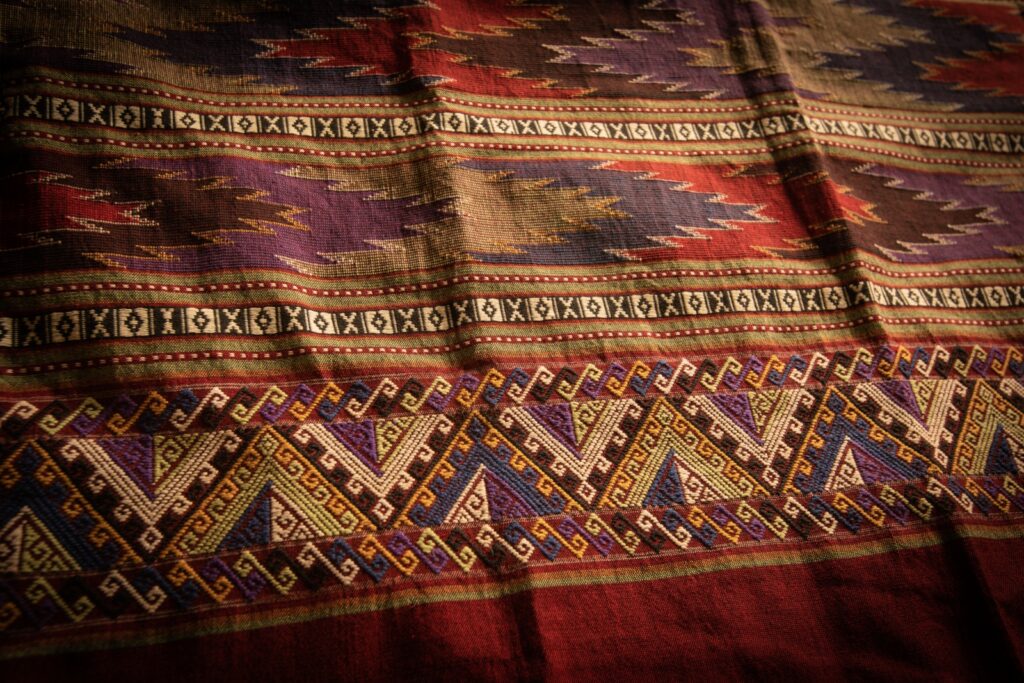
The five distinct types of Sinh each boast exceptional craftsmanship and historical significance. Beyond their visual appeal and ability to captivate attention, every piece is meticulously crafted with advanced techniques, showcasing the splendor of a bygone royal court and the richness of a thriving trade society. These weavings embody a blend of cultural diversity, reflecting a prosperous era.
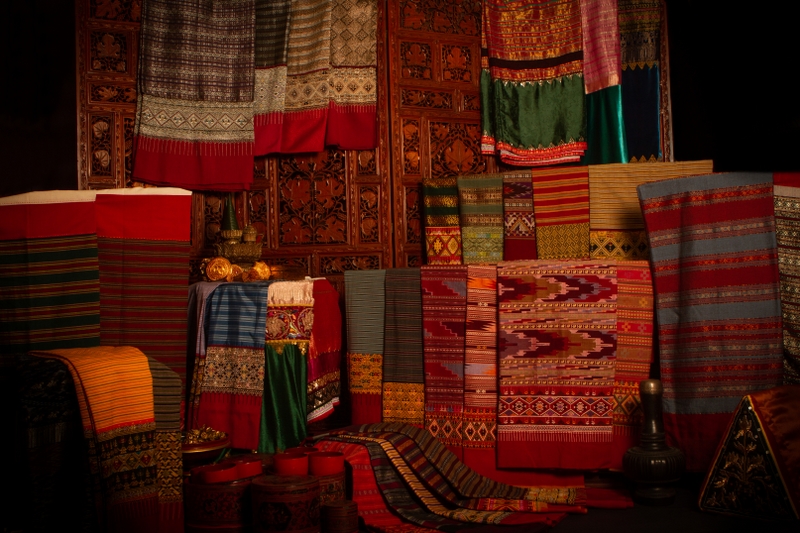
An author assistant Nonthawat Ningjaiyen
TRULY THAI AUTHENTIC YOU CAN BE
>>ติดตามเรื่องราวความเป็นไทยอย่างใกล้ชิดที่ Thai Style Studio<<
เพราะเราเชื่อว่า “มากกว่าความรู้สึก คือ การได้สัมผัสประสบการณ์ความเป็นไทยด้วยตัวคุณเอง”
